Resources
Menstruation and human rights - Frequently asked questions
Resource date: May 2022
Author: UNFPA
Resources
Resource date: May 2022
Author: UNFPA
What is menstruation? What is the menstrual cycle?
How is menstruation related to human rights?
What do people need to manage their menstruation?
What happens when menstruation cannot be managed properly?
What are symptoms or disorders related to menstruation?
What is PMS and when does it occur?
When does menstruation start? Is the onset of menstruation earlier today than it used to be?
What are common myths and taboos about menstruation? How do they affect the status of women?
What is period poverty?
What are positive aspects of menstruation?
Does menstruation limit what people can do?
What is UNFPA doing on the issue of menstrual health?
Can a person get pregnant during menstruation?
Is menstruation bad for the environment?
Are menstrual products bad for your health?
How will the COVID-19 pandemic affect people's ability to manage their menstruation?
Menstruation is the process in which the uterus sheds blood and tissue through the vagina. This is a natural and healthy process for girls and women of reproductive age. In Western communities, this is often called “the period.” It typically lasts 2 to 5 days, but this varies by individual.
When a person begins to menstruate, this is called menarche. The age of menarche varies by individual.
Menstruation is part of the menstrual cycle – a cycle of biological changes that take place in a woman or girl’s reproductive system to prepare her body for a potential pregnancy. The changes are triggered by hormones, which are natural chemicals in the body. This cycle begins when a girl reaches puberty and continues until she reaches the end of her fertility (also known as menopause, at which time menstrual cycles end).
The menstrual cycle is roughly 28 days long, but it can be shorter or longer. It begins with menstruation (considered day 1 of the cycle). Menstruation is the shedding of the lining of the uterus and the remnants of the unfertilized egg. It continues with an increase in the hormone estrogen, and the lining of the uterus becomes thick and spongy again (typically days 6-8). An egg is released from one of the ovaries, called “ovulation” (around day 14, but this can vary), then the egg moves through the fallopian tube towards the uterus (typically day 15-24). If the egg is not fertilized, it will not be implanted in the uterine wall but instead fall apart, and hormone levels such as estrogen and progesterone, will drop. This process is followed by the start of a new cycle.
While a person’s menstrual cycles may be consistent – even predictable – they can also change or vary, particularly in the first few years after menarche. Some changes, such as absence of bleeding, signal a pregnancy. Other changes can be related to contraceptive use, stress, nutrition, physical activity or health concerns. Some cycle changes are just a natural part of ageing.
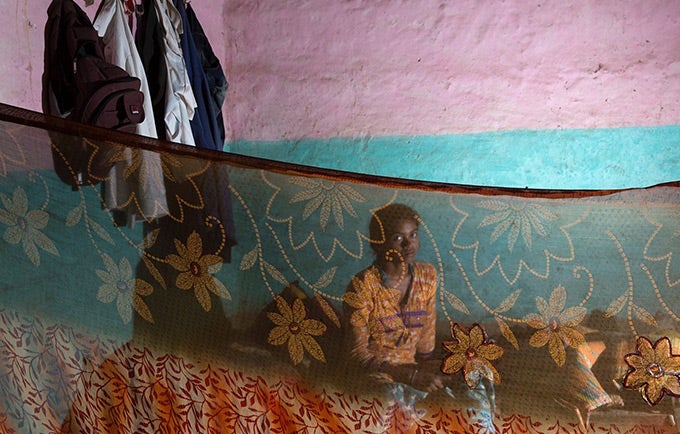
Human rights are rights that every human being has by virtue of his or her human dignity. Menstruation is intrinsically related to human dignity – when people cannot access safe bathing facilities and safe and effective means of managing their menstrual hygiene, they are not able to manage their menstruation with dignity. Menstruation-related teasing, exclusion and shame also undermine the principle of human dignity.
Gender inequality, extreme poverty, humanitarian crises and harmful traditions can all turn menstruation into a time of deprivation and stigma, which can undermine their enjoyment of fundamental human rights. This is true for women and girls, as well as for transgender men and nonbinary persons who menstruate.
Over the lifetime of a person who menstruates, they could easily spend three to eight years menstruating, during which they might face menstruation-related exclusion, neglect or discrimination.
A variety of factors affect how people are treated during menstruation (and other times when they experience vaginal bleeding, such as during post-partum recovery).
Exclusion from public life
One of these factors is the perception that menstruation is dirty or shameful. This view contributes to restrictions women and girls face during vaginal bleeding, which exist in many, if not most, countries. Some restrictions are cultural, such as prohibitions on handling food or entering religious spaces, or the requirement that women and girls isolate themselves. (See examples of menstruation taboos and discrimination here.) Some restrictions are self-imposed; women or girls may fear participating in activities like school, athletics or social gatherings. Together, these practices can reinforce the idea that women and girls have less claim to public spaces, and that they are less able to participate in public life.
Barriers to opportunities
Another common misconception is that women and girls have diminished capacities, whether physical or emotional, due to their menstrual cycles. These ideas can create barriers to opportunities, reinforcing gender inequality. In truth, most women and girls do not have their abilities hindered in any way by menstruation.
Barriers to sanitation and health
Poverty and humanitarian crises can limit women’s and girls’ access to culturally appropriate, high quality menstrual supplies and safe, private washing facilities.
Vulnerable women and girls in middle- and high-income countries can also face poor access to safe bathing facilities and menstrual supplies – including those in impoverished school systems, prisons and homeless shelters.
Heightened vulnerability
The onset of menstruation, called menarche, can undermine girls’ human rights. In many places around the world, menarche is believed to be an indication that girls are ready for marriage or sexual activity. This leaves girls vulnerable to a host of abuses, including child marriage and sexual violence.
Deeply impoverished girls have been known to engage in transactional sex to afford menstrual products.
Below is a list of universally agreed human rights that can be undermined by women’s and girls’ treatment during menstruation:
Health issues particular to women’s and girls’ bodies – including not only menstruation but also pregnancy, childbirth, post-partum changes and menopause – have often been overlooked by decision-makers, policymakers, educators and even medical establishment. As a result, women and girls often know little about the changes they will experience as they advance through life. Many girls learn about menstruation only when they reach puberty, which can be a frightening and confusing experience.
People of different gender diversities, as well, such as transgender men and nonbinary people, often face additional barriers to information and supplies to safely manage menstruation, including possible threats to their safety and well-being.
In the last few years, however, menstrual health and hygiene management have become topics of conversation among girls’ advocates, education experts, humanitarian professionals, human rights and global development specialists.
There is now wide agreement about what is required during menstruation:
- They must have safe access to clean material to absorb or collect menstrual blood, and these items must be acceptable to the individuals who need them.
- They must be able to change these materials in safety and privacy, and have a place to dispose of used menstrual supplies or to wash reusable supplies.
- Menstruating people must also be able to safely and privately wash with soap and water.
- They should have basic education about the menstrual cycle and how to manage menstruation without discomfort or fear.
- People who menstruate should also have access to health information and care, ensuring they are able to make informed choices about how to manage their menstruation, and enabling them to seek care if they experience menstruation-related disorders.
Menstrual products must also be safe, effective and acceptable to the people who use them. These products may include: Disposable menstrual pads (also commonly called sanitary napkins or sanitary towels), reusable menstrual pads, tampons, menstrual cups, and clean, absorbent fabrics such as cloths or period underwear.
UNFPA distributes menstrual products to women and girls in humanitarian crises. The choice of product is often determined by cultural and logistical needs. For example, in some communities, women are not comfortable with insertable products such as tampons or menstrual cups. In humid or rainy conditions, reusable menstrual pads may be difficult to thoroughly dry, possibly contributing to infection risks. In other conditions, lack of waste management systems might make reusable products more desirable than disposable ones.
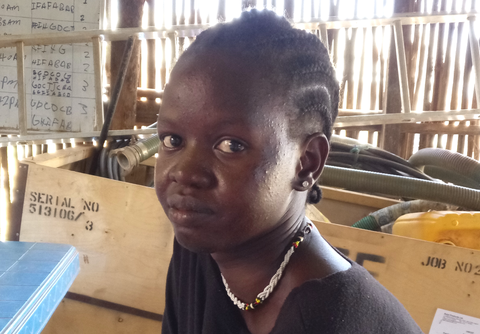
Lack of access to the right menstrual products may lead to greater risk of infection. For example, some studies show that, in locations with high humidity, reusable pads may not dry thoroughly, possibly contributing to infection risks. Other products, such as menstrual cups, require sterilization and tampons require frequent changing, both of which may present challenges in conditions like humanitarian crises.
In some cases, women and girls do not have access to menstrual products at all. They may resort to rags, leaves, newspaper or other makeshift items to absorb or collect menstrual blood. They may also be prone to leaks, contributing to shame or embarrassment.
One study has suggested that there may be an increased risk of urogenital infections, such as yeast infection, vaginosis or urinary tract infections, when women and girls are not able to bathe and/or change or clean their menstrual supplies regularly. However, there is no clear causal relationship, and urogenital infections are more often caused by internal, than external bacteria.
Women and girls living in extreme poverty and in humanitarian crises may be more likely to face these challenges. In one Syrian refugee community, for example, health workers reported seeing high levels of such vaginal infections, perhaps a result of poor menstrual hygiene management. However, there is no strong evidence about the risks and prevalence of such infections.
Cultural expectations and beliefs can also play a role. Some traditions discourage menstruating people from touching or washing their genitals during menstruation, which might increase their vulnerability to infection and discomfort, and could affect their sense of dignity.
Menstruation is often different from person to person, and even one person can experience very different periods over their lifetime. This is often healthy and normal. But when menstruation prevents people from engaging in regular activities, medical attention is required. Unfortunately, lack of attention to, and education about, menstruation means that many women and girls suffer for years without receiving care. Below are some of the conditions and disorders related to menstruation.
One common menstruation-related complaint is dysmenorrhea, also known as menstrual cramps or painful periods. It often presents as pelvic, abdominal or back pain. In some cases, this pain can be debilitating. Studies show that dysmenorrhea is a major gynaecological issue among people around the world, contributing to absenteeism from school and work, as well as diminished quality of life.
Sometimes, menstrual irregularities can indicate serious disorders. For example, some women and girls may experience abnormally heavy or prolonged bleeding, called menorrhagia, which could signal a hormonal imbalance or other concerns.
Excruciating pain or excessive bleeding during menstruation can also indicate reproductive problems such as endometriosis (when the uterine lining grows outside of the uterus) or fibroids (lumpy growths in the uterus).
Irregular, infrequent or prolonged periods can indicate disorders such as polycystic ovary syndrome.
Extremely heavy periods can also increase the risk of iron-deficiency anaemia, which can cause extreme fatigue, weakness, dizziness and other symptoms. Severe or chronic iron-deficiency anaemia can cause dangerous complications during pregnancy as well as physiological problems.
The hormonal changes associated with the menstrual cycle can also cause physical and emotional symptoms, ranging from soreness, headaches and muscle pain to anxiety and depression. These symptoms are sometimes considered premenstrual syndrome (PMS), but when severe or disabling they are sometimes considered premenstrual dysphoric disorder.
There are also conditions that can exacerbate menstruation-related complaints. For example, studies show that female genital mutilation can cause longer and more painful periods.
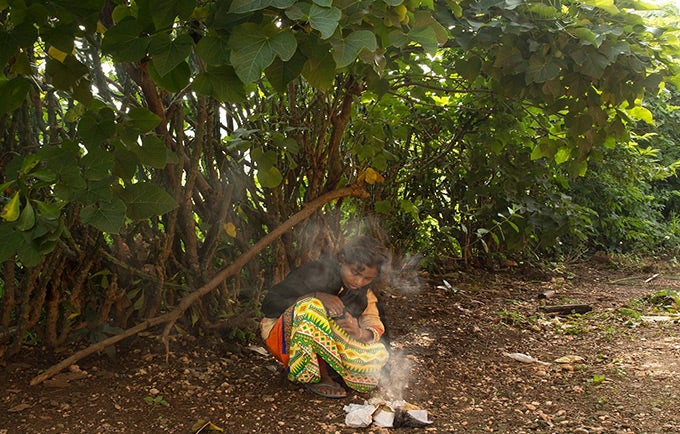
Most people who menstruate experience some physical or emotional discomfort known as premenstrual syndrome (PMS) about a week before or during the first few days of their menstrual periods.
PMS manifests differently in different people and may vary between menstruation cycles. The most common symptoms during PMS include changes in appetite, backaches, acne, bloating, headaches, depression, feelings of sadness, tension or anxiety, irritability, sweating, tender breasts, water retention, constipation or diarrhea, trouble concentrating, insomnia and tiredness. For some, these symptoms can be so severe that they miss work or school, while others are not bothered.
On average, women in their 30s are most likely to have PMS. PMS may also increase as a person approaches menopause because of the fluctuations in hormone levels.
It is not really known why people experience PMS. Researchers believe it is because of the dramatic drop in estrogen and progesterone that takes place after ovulation when a woman is not pregnant. PMS symptoms often disappear when the hormone levels begin to rise again.
About half of women who need relief from PMS also have another health problem, such as depression or anxiety disorders, myalgic encephalomyelitis/chronic fatigue syndrome, irritable bowel syndrome, and bladder pain syndrome.
Stereotypes and stigma surrounding PMS can contribute to discrimination. For instance, people may assume that PMS affects all women, or that it undermines women’s competence in the school or workplace.
The onset of menstruation, called menarche, varies from person to person. It commonly starts between the ages of 10 and 16.
In rare cases, menarche can take place before a girl reaches age 7 or 8. Menarche can also be delayed or prevented due to malnutrition, excessive exercise or medical issues.
It is hard to know the global average age of menarche, because recent and comparable data are hard to find. One study from 1998 found that 14 is a typical age of menarche.
Some studies have found that menarche is occurring earlier among girls in certain places, often in high-income countries and communities. Research from countries such as South Africa suggest these changes are related to nutrition and socio-economic status, meaning that as nutrition and health improve, girls’ bodies may mature slightly earlier. However, lack of systematically collected data from low-income countries means that broader or global conclusions cannot be made.
Similarly, it is difficult to determine the average age at which menstruation ends, known as menopause. Data from 1999 suggest an average age of around 50.
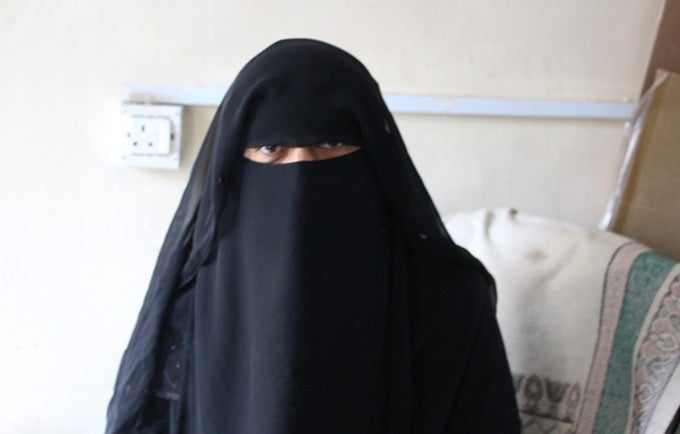
Menstrual taboos have existed, and still exist, in many or most cultures. Around the world and throughout history, misconceptions about menstruation have led to women’s and girls’ exclusion from all kinds of roles and settings – everything from leadership positions to space travel. Below is a non-exhaustive list of menstruation myths and taboos, as well as their impact on women and girls.
Myth: Menstruation is dirty or dangerous
Menstrual blood is composed of regular blood and tissue, with no special or dangerous properties. Yet throughout history, many communities have thought the mere presence of menstruating women could cause harm to plants, food and livestock. In the 1930s, Western scientists hypothesized that menstruating women’s bodies produced “menotoxins,” a kind of poison.
People continue to hold similar beliefs today. Some communities believe women and girls can spread misfortune or impurity during menstruation (or other vaginal bleeding). As a result, they may face restrictions on their day-to-day behavior, including prohibitions on attending religious ceremonies, visiting religious spaces, handling food or sleeping in the home.
In western Nepal, the tradition of chhaupadi prohibits women and girls from cooking food and compels them to spend the night outside the home, often in a hut or livestock shed. Similar rules apply to women and girls in parts of India and other countries. (In one rural community in Ethiopia, the taboos about vaginal bleeding led not only to women and girls being exiled from the home during menstruation, but also during childbirth and postpartum bleeding.) Isolation and expulsion from the home are often dangerous for women and girls – and can even be fatal. For example, women and girls in Nepal have been exposed to extreme cold, animal attacks or even sexual violence.
(It is important to note that not all aspects of these traditions are negative. In some places, limitations on women’s and girls’ activities give them an opportunity to return their maternal home to relax. See more here.)
Menstrual stigmas also affect how women and girls are able to manage their health and hygiene. Some cultures prohibit women and girls from touching or washing their genitals during menstruation, possibly contributing to infections. In some parts of Afghanistan, it is even believed that washing the body during menstruation can lead to infertility. In other places, women and girls are fearful that their bodies could pollute water sources or toilets.
These beliefs also affect how women and girls dispose of menstrual products. In some places, women burn menstrual pads to avoid cursing animals or nature. In other places, burning menstrual products is believed to cause infertility. Some communities believe menstrual products should be buried to avoid attracting evil spirits. Others believe improper disposal of these products can cause a girl to menstruate continuously for life.
Myth: Certain foods are off-limits to menstruating women and girls
Many communities believe menstruating women and girls cannot eat certain foods, such as sour or cold foods, or those prone to spoilage. In fact, there are no medically recommended restrictions on the kinds of food menstruating people can or should eat, and dietary restrictions can actually put them at risk by limiting their nutrient intake.
Myth: Menstruation indicates readiness for marriage and sex
In many places around the world, a girl’s first period, called menarche, is believed to be a sign that she is ready for marriage, sexual activity and childbirth. This leaves girls vulnerable to a host of abuses, including child marriage, sexual violence or coercion, and early pregnancy. While menstruation is one indication of biological fertility, it does not mean girls have reached mental, emotional, psychological or physical maturity. In rare cases, menarche can take place before a girl reaches age 7 or 8, for example. And even older teens may not be mature enough to make informed choices about marriage, sexual activity or motherhood.
Myth: Menstruation limits women’s abilities
Menstruation is also commonly believed to limit women’s physical or mental abilities. Nineteenth century physicians, for example, believed that periods “render it extremely doubtful how far they can be considered responsible beings.” Similar ideas persist today. Women may face degrading comments about menstruation affecting their physical or emotional states. They may be excluded from certain roles or positions of leadership.
Myth: Real women menstruate
Women can also face stigma and mistreatment for not having periods. Those who do not menstruate may be disparaged as “not real women.” Such perceptions contribute to some women’s reluctance to use contraceptive methods that affect their menstrual cycles.
These beliefs can adversely affect women who do not experience regular monthly menstruation, such as women who have irregular cycles and transgender women.
These ideas are also harmful to transgender men who menstruate. These men can face discrimination, limited access to menstruation products and poor access to safe, private washing facilities.
Taboo: Menstruation should not be discussed publicly
Silence about menstruation can lead to ignorance and neglect, including at the policy level. This leaves women and girls vulnerable to things like period poverty and discrimination. It also adversely affects women and girls with heightened vulnerabilities. Those living with HIV can face stigma when seeking sanitation facilities, menstruation supplies and health care, for example. Those in prisons or other forms of detention may be deprived of menstruation supplies.
Myth: All women are moody when they menstruate
The menstrual cycle is driven by hormonal changes. These have different effects on different people. In some women, moodiness is a side-effect of these hormonal changes. Other women do not experience mood changes.
Myth: Menstruation is a women’s issue only
While it is true that menstruation is experienced in the bodies of women and girls – as well as other individuals such as non-binary and trans persons – menstrual health issues are human rights issues, and therefore of importance to society as a whole. This means that men and boys must be involved in conversations about gender equality and promoting positive masculinities aiming to eliminate menstruation-associated stigma and discrimination.
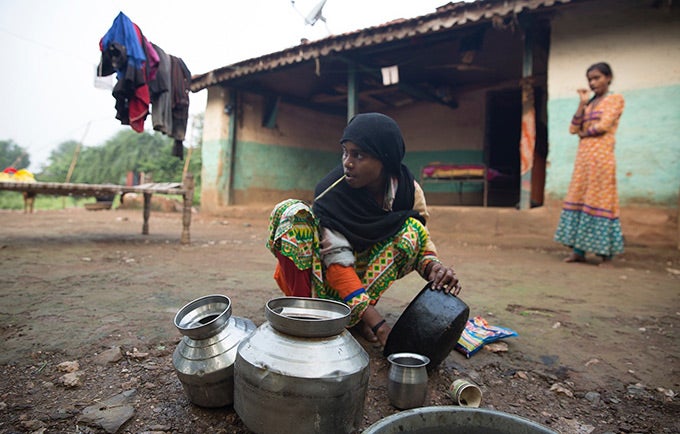
Period poverty describes the struggle many low-income women and girls face while trying to afford menstrual products. The term also refers to the increased economic vulnerability women and girls face due the financial burden posed by menstrual supplies. These include not only menstrual pads and tampons, but also related costs such as pain medication and underwear.
Period poverty does not only affect women and girls in developing countries; it also affects women in wealthy, industrialized countries.
Difficulty affording menstrual products can cause girls to stay home from school and work, with lasting consequences on their education and economic opportunities. It can also exacerbate existing vulnerabilities, pushing women and girls closer toward dangerous coping mechanisms. Studies in Kenya, for example, have shown that some schoolgirls have engaged in transactional sex to pay for menstrual products.
Period poverty is not only an economic issue, but a social and political one as well. For instance, some advocates have called for menstruation products to be taxation exempt. Such efforts in India have resulted in the elimination of tax on menstrual pads and tampons.
Regular menstruation can be an indication that a woman’s reproductive health is on track.
It can help women understand and, in a general way, monitor their fertility. For instance, many women regard their monthly period as an indication that they are not pregnant. (This method is not foolproof, however, since even pregnant women can experience bleeding, such as implantation bleeding).
Some traditions offer menstruating women and girls a chance to bond with one another. In Rajasthan, India, where menstruation can restrict women’s and girls’ activities, recently married women may use it as an opportunity to visit their maternal families. Menstruation can also be an opportunity to take a break from regular responsibilities. One girl in Rajasthan, Poonam, told UNFPA that she is happy that she is not expected to help out with household chores when she is menstruating.
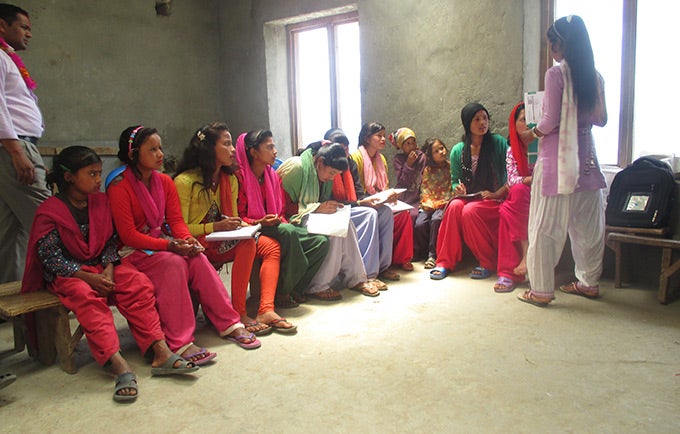
No. While menstruation has been used throughout history to exclude women and girls from all kinds of roles and settings, there is really nothing that menstruating people cannot do. Exercise, swimming, bathing, work and sex are all possible during menstruation.
In some cultures, there are restrictions on what people can do during menstruation, but these are customs, beliefs and traditions and have nothing to do with people’s actual abilities. Menstruating women can – and have – competed in the Olympics, run marathons, traveled to space, held leadership roles, served as judges and held religious offices.
However, the management of menstruation does influence what people can do; women and girls may prefer to go swimming when they have access to menstrual cups or tampons, for instance. Menstrual symptoms can also affect what people feel like doing.
UNFPA has four broad approaches to promoting and improving menstrual health around the world.
First, UNFPA reaches women and girls directly with menstrual supplies and safe sanitation facilities. In humanitarian emergencies, for example, UNFPA distributes dignity kits, which contain disposable and reusable menstrual pads, underwear, soap and related items. (In 2017, 484,000 dignity kits were distributed in 18 countries.) UNFPA also helps to improve the safety of toilets and bathing facilities in displacement camps by working with camp officials, distributing flashlights and installing solar lights.
UNFPA also promotes menstrual health information and skills-building. For example, some UNFPA programmes teach girls to make reusable menstrual pads. Others raise awareness about menstrual cups.
Second, UNFPA works to improve education and information about menstruation and related human rights concerns. Through its youth programmes and comprehensive sexuality education efforts, such as the Y-Peer programme, UNFPA helps both boys and girls understand that menstruation is healthy and normal. UNFPA also help raise awareness that the onset of menstruation (menarche) does not signify a physical or psychological readiness to be married or bear children. The UNFPA-UNICEF Global Programme to Accelerate Action to End Child Marriage, for instance, teaches girls and communities about reproductive health and the harms caused by child marriage. Programmes to end female genital mutilation, including the UNFPA-UNICEF Joint Programme to Eliminate FGM, raise awareness of the negative consequences the practice can have on menstrual health.
Third, UNFPA supports national health systems, which can promote menstrual health and provide treatment to girls and women suffering from menstrual disorders. This includes promoting adolescent- and youth-friendly health services, which can help girls and young women better understand and care for their bodies. UNFPA also supports the hiring and training of health workers, particularly midwives, who can provide care for, and information about, menstrual health complaints. UNFPA also procures reproductive health commodities that can be useful for treating menstruation-related disorders. For instance, hormonal contraceptive methods can be used to treat symptoms of endometriosis and reduce excess menstrual bleeding.
Last, UNFPA is helping to gather data and evidence about menstrual health and its connection to global development – a long overlooked topic of research. For instance, UNFPA-supported surveys provide critical insight into girls’ and women’s knowledge about their menstrual cycles, health and access to sanitation facilities. And a recent UNFPA publication provides a critical overview of the menstrual health needs of women and girls in the Eastern and Southern Africa region.
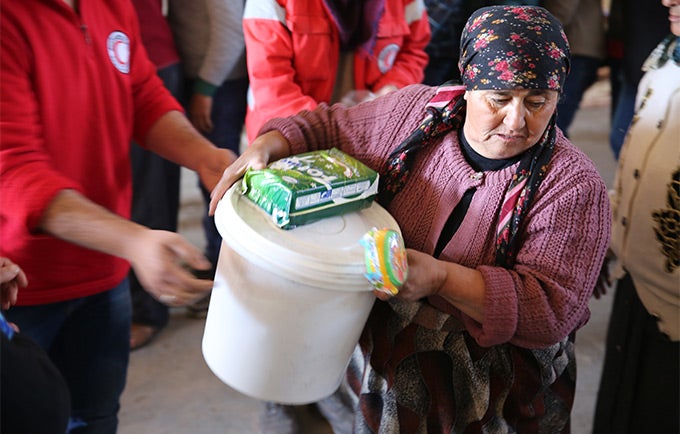
Yes. It is widely believed that intercourse during menstruation cannot result in pregnancy. However, this is not true for women and girls with shorter or irregular menstrual cycles. Non-menstrual vaginal bleeding may also be mistaken for menstruation, which can convey a false sense of security against pregnancy. The only reliable way to prevent pregnancy is to use a modern form of contraception.
No, menstruation in itself is not bad for the environment. However, products used to manage menstruation can have a negative impact on the environment, depending on the product and the way it is disposed.
Menstrual products such as tampons and pads often contain plastics and chemicals that are bad for the environment. The time it takes for them to degrade in a landfill is centuries longer than the lifespan of a woman. Menstrual products can also be found in bodies of water and along shorelines. The manufacturing process to produce menstrual products also has environmental consequences.
More environmentally friendly options include reusable menstrual cups as well as reusable and/or biodegradable pads.
But in many places, alternative methods are not available or culturally acceptable. In all circumstances, the choice of menstrual product must be acceptable to the people using them. For example, some women are not comfortable with insertable products like menstrual cups. In humid environments, reusable menstrual pads may be difficult to thoroughly dry.
Given the potential environmental consequences of disposable menstrual products, it is important to expand the range of methods available to women, allowing them to make informed choices that fit their needs.
In general, no. However, there are possible health impacts to consider.
Use of highly absorbent tampons has been associated with toxic shock syndrome (TSS), a life-threatening condition, but these cases are rare. Frequently changing tampons greatly lowers the risk of TSS.
People with sensitive skin may have reactions to the materials used in menstrual products, such as the fragrances used in some pads.
In addition, many countries do not obligate manufacturers to disclose the ingredients or components of menstrual products, which could lead to women being exposed to unwanted materials. Some tampon brands, for instance, contain chemicals like dioxins. There has been little research to determine the health consequences, if any, caused by exposure to these chemicals.
Communities around the world are feeling the numerous and overlapping effects of the COVID-19 pandemic. These may have significant impacts on some people's ability to manage their menstruation safely and with dignity:
In times of global crises, such as this pandemic, it is critical to ensure that menstruating people continue to have access to the facilities, products and information they need to protect their dignity, health and well-being. Decision-makers must assure these essential menstrual health items remain available.